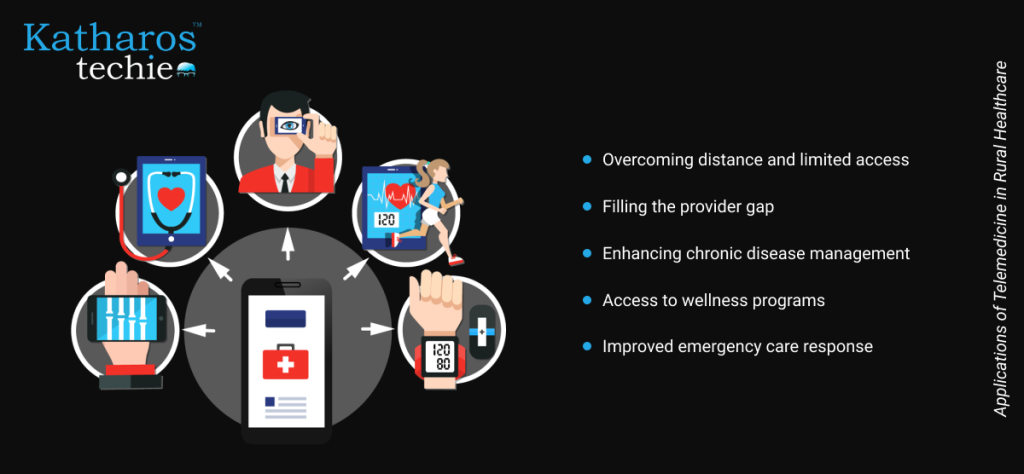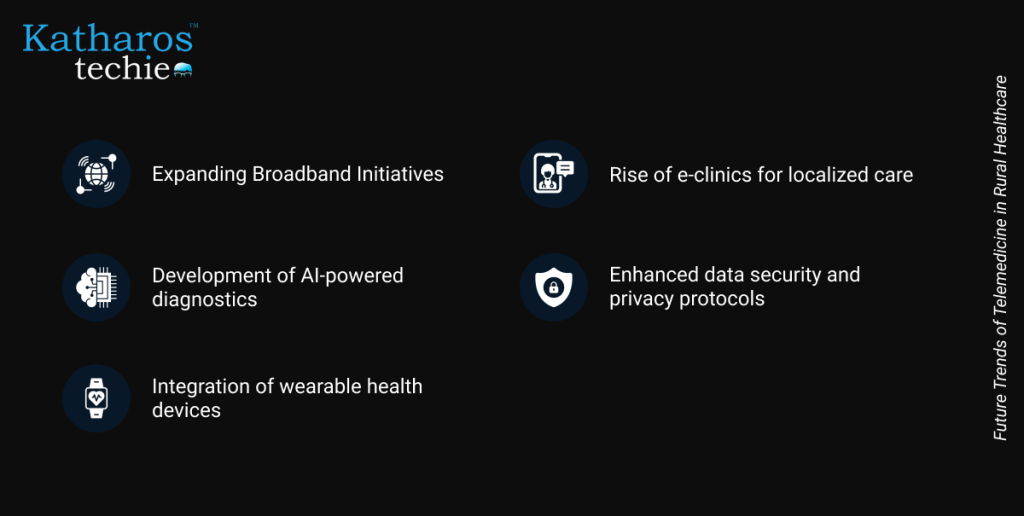
Telemedicine in Rural Healthcare: Bridging the Gap
By Ankita Das

Telemedicine is emerging as a vital solution for enhancing healthcare delivery in rural areas, where access to medical services is often limited. This innovative approach leverages technology to remotely connect patients with healthcare providers, addressing challenges like transportation barriers and specialist shortages.
Telemedicine enables timely consultations, improving patient outcomes and reducing the need for long-distance travel. By utilizing video conferencing and remote monitoring, patients can receive quality care from the comfort of their homes. In this blog, we will explore the transformative impact of telemedicine on rural healthcare. Scroll down to learn more about its key applications, benefits, and the challenges faced during implementation.
Understanding Telemedicine in Rural Healthcare
Telemedicine leverages digital communication technologies to deliver timely access to medical care regardless of geographical barriers. This approach relies on robust technological foundations, including high-speed internet, secure communication platforms, and wearable devices. Video consultations allow real-time interaction between patients and healthcare providers to facilitate diagnosis without physical visits. It also employs remote monitoring tools, including wearable sensors and mobile health apps, to track chronic conditions such as diabetes and hypertension. These technologies empower healthcare providers to intervene promptly, improving patient outcomes.
The range of services offered through telemedicine is extensive and diverse. It provides primary care services, specialist consultations, and mental health counseling.
- Primary care services include routine check-ups, prescription refills, and health education.
- Specialist consultations are also available, through which rural patients can connect remotely with experts in fields like cardiology, oncology, or dermatology.
- Mental health services, such as therapy and counseling, have also been prioritized, especially for underserved populations where mental health resources are limited.
Telemedicine bridges the gap in rural healthcare access by integrating both technologies and services. It improves the quality of care and reduces patients’ costs and travel burdens. As telemedicine continues to evolve, it holds immense potential to transform rural healthcare delivery and ensure equitable access to medical services for all.
Applications of Telemedicine in Rural Healthcare

Telemedicine plays a crucial role in addressing the unique healthcare challenges faced by rural communities. Here are 5 key applications of telemedicine:
1. Overcoming Distance and Limited Access
One of the most significant barriers to healthcare in rural areas is the distance patients must travel to reach medical facilities. Telemedicine eliminates this barrier by allowing patients to consult healthcare providers from their homes. For instance, the E-Sanjeevani initiative in India has successfully connected patients in remote villages with doctors through virtual consultations. This initiative helped significantly reduce travel times and costs.
2. Filling the Provider Gap through Telemedicine
Rural areas often face a shortage of healthcare professionals, limiting access to essential services. Telemedicine enables rural patients to connect with specialists who may not be available locally. For example, Horizon Health Alliance in New York has implemented telehealth solutions that allow 70% of its mental health patients to receive care virtually. This approach ensures that even those in isolated areas can access critical mental health services.
3. Enhancing Chronic Disease Management
Chronic diseases such as diabetes and hypertension require regular monitoring and management. Telemedicine facilitates continuous patient monitoring through remote devices that track vital signs and health metrics. Patients can share this data with healthcare providers in real-time, allowing for timely interventions. For example, remote monitoring systems have been used effectively in rural Minnesota to track patients’ health conditions. Consequently, this leads to improved management of chronic diseases.
4. Access to Wellness Programs
Telemedicine also provides access to wellness programs that promote preventive care and healthy living. Many telehealth platforms offer educational resources, nutrition counseling, and fitness programs tailored for rural populations. These initiatives empower individuals to take charge of their health and well-being without in-person visits.
5. Improved Emergency Care Response
In emergencies, timely medical intervention is critical. Telemedicine enhances emergency care by enabling rapid consultations with specialists who can guide local healthcare providers during critical situations. For example, SA Health in Australia implemented a telehealth platform that doubled its capacity to treat stroke patients while reducing unnecessary hospital transfers by 72%. This rapid response capability can be life-saving for patients in rural settings.
Through these applications, telemedicine is transforming healthcare delivery in rural areas. Thus making healthcare more accessible and efficient while addressing the unique challenges that rural communities face.
Future Trends of Telemedicine in Rural Healthcare

Telemedicine is poised to transform healthcare delivery in rural areas by integrating advanced technologies and innovative solutions. As the demand for equitable healthcare grows, the following future trends will accelerate:
1. Expanding Broadband Initiatives
Reliable internet connectivity remains a critical barrier to telemedicine adoption in rural areas. Governments and private organizations are investing in broadband expansion projects to bridge this gap. The Federal Communications Commission’s (FCC) Rural Digital Opportunity Fund aims to provide high-speed internet to underserved regions in the United States. Improved connectivity will ensure seamless telemedicine operations, enabling patients to access virtual consultations uninterrupted.
2. Development of AI-Powered Diagnostics
Artificial intelligence (AI) is revolutionizing diagnostics by analyzing medical data with unparalleled accuracy and speed. AI algorithms can detect patterns in patient data, predict diseases early, and recommend personalized treatment plans. For example, AI-based platforms like IBM Watson Health assist rural healthcare providers in diagnosing complex conditions such as cancer or cardiovascular diseases. This technology reduces dependency on specialists and empowers rural clinics to deliver advanced care.
3. Integration of Wearable Health Devices
Wearable health devices are vital tools for real-time patient monitoring in rural areas. Devices like smartwatches and biosensors track vital signs such as heart rate, blood pressure, and glucose levels. These data are transmitted to healthcare providers via telemedicine platforms for timely interventions. In Andhra Pradesh, India, wearable devices have been integrated into telehealth programs to monitor the health of pregnant women remotely. This initiative has proven to reduce maternal mortality rates.
4. Rise of E-Clinics for Localized Care
E-clinics are emerging as a game-changer for rural healthcare by offering localized access to medical services. Initiatives like India’s Ayushman Bharat Health and Wellness Centers provide teleconsultations through e-clinics. Thus ensuring consistent care for remote populations while alleviating overcrowding in metropolitan hospitals.
5. Enhanced Data Security and Privacy Protocols
As telemedicine adoption grows, safeguarding patient data becomes paramount. Advanced encryption technologies and blockchain systems are being implemented to secure medical records and ensure compliance with privacy regulations like HIPAA.
Telemedicine is transforming rural healthcare through innovative solutions to overcome challenges like geographical barriers and limited specialist availability. By enabling remote consultations, chronic disease management, and emergency care, telemedicine ensures equitable healthcare delivery for underserved communities. Future trends, such as AI-powered diagnostics and wearable health devices, promise to enhance its effectiveness further. Embrace the future of rural healthcare and explore how telemedicine can improve the quality of care in your community today.